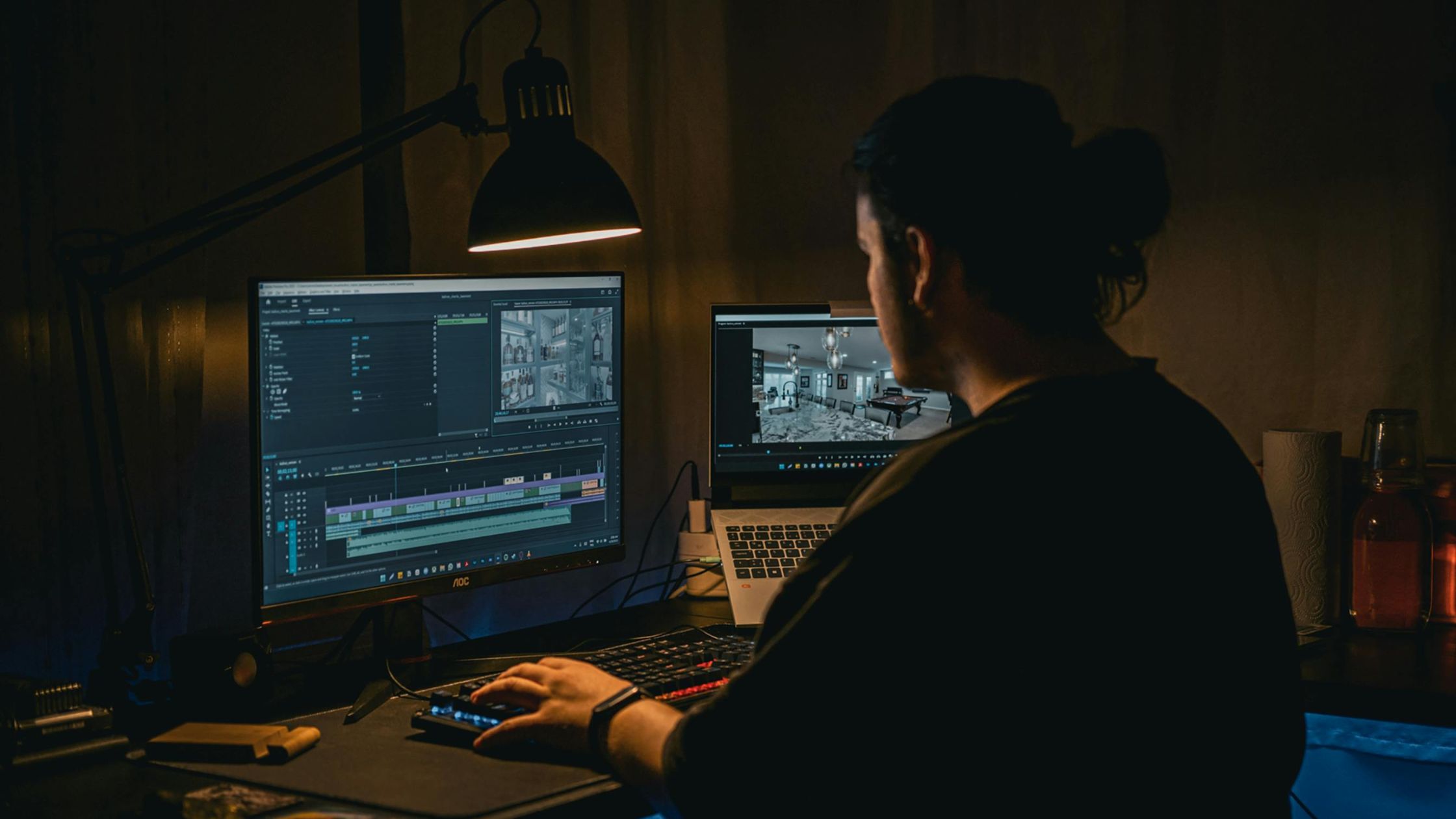AI’s presence in video editing isn’t new—but what’s changed in 2025 is that it’s finally becoming… useful. After years of overhyped demos and TikTok gimmicks, a new crop of AI tools is quietly reshaping professional editing workflows. And not by replacing editors—but by freeing them from the most tedious, repetitive tasks.
The shift is best summed up by Amsterdam-based director Bas Goossens, who recently wrote:
“If AI can take over the mundane stuff—like endless white balance tweaks—it gives us more time to focus on what really matters: the meaning behind an image, the story it tells.”
That’s the spirit behind this roundup. These aren’t toys or vaporware—they’re six tools that real editors are using every day to save time, enhance quality, and make creative work more sustainable.
1. Adobe Premiere Pro & After Effects (Powered by Adobe Sensei)
Adobe has taken a pragmatic path with AI: instead of reinventing the wheel, it’s spent years embedding its Sensei engine into the tools editors already use.
In Premiere Pro, that means smart features like:
- Generative Extend, which intelligently lengthens clips.
- Auto Reframe, adjusting aspect ratios for different platforms.
- Filler Word Detection, perfect for cleaning up interviews fast.
- Scene Edit Detection, saving hours when working with long takes.
After Effects gets a boost too. The latest Rotobrush 2 now uses AI for edge detection, making what used to be hours of masking a matter of minutes. These aren’t headline-grabbing features—but they’re workflow-defining if you’re deep in post.
2. DaVinci Resolve’s Neural Engine (Blackmagic Design)
Blackmagic was slower to the AI party, but its Neural Engine—first introduced in 2024—is now one of the most powerful AI toolsets in editing.
Highlights include:
- Speed Warp for buttery slow motion using machine-learned frame interpolation.
- Face detection and smart reframing, making it easy to build polished, social-ready exports.
- Object Removal, which accurately tracks and deletes unwanted elements from footage.
The best part? It’s all integrated directly into Resolve, with no need for plug-ins or a subscription.
3. HeyEddie.ai — ChatGPT for Rough Cuts
Think of HeyEddie.ai as your AI-powered assistant for interview-heavy content. Its strength lies in rough cuts, especially for multicam shoots.
Upload your footage, and you can:
- Ask for a “short punchy version” or “stronger hook,” and Eddie generates a rough cut on command.
- Auto-sync A-roll and B-roll.
- Export directly to Premiere, Resolve, or FCP for final polish.
If you spend too much time scrubbing through talking-head content, HeyEddie can shave hours off your week—no exaggeration. Bonus: its text-based interface is familiar to anyone who’s used ChatGPT.
4. Descript — Edit Video by Editing Text
Descript has turned editing on its head by letting you edit video like a Word doc. Upload footage, and it auto-generates a transcript. Delete a sentence in the transcript? It’s deleted from the video. Move a paragraph? The timeline adjusts accordingly.
Its Overdub tool can even generate new voice lines based on the speaker’s voice—ideal for quick pickups or fixing mistakes without re-recording.
While it’s not built for cinematic editing, it’s brilliant for creators working on podcasts, tutorials, or marketing content.
5. Topaz Video AI — Restoration & Upscaling Made Simple
Topaz Video AI brings Hollywood-style restoration tools to your desktop. Its AI-powered suite includes:
- Frame interpolation for silky slow-mo.
- Deblurring and denoising for grainy footage.
- 4K upscaling that looks legit—not just resized pixels.
It’s especially useful for editors working with archival content or smartphone footage where quality needs a serious boost. Think of it as your post-production rescue kit.
6. Colourlab AI — Smarter Color Grading
Grading has always been a black art—half technical, half intuitive. Colourlab AI, created by veteran colorist Dado Valentic, doesn’t replace that judgment. But it gives you a serious head start.
Its standout features:
- LUT matching based on reference images.
- Look transfer to match scenes shot in different lighting or with different cameras.
It’s not magic, but it gets you 80% of the way to a polished grade—fast. And for freelancers or teams without a dedicated colorist, that’s a game-changer.
Final Take: Don’t Fear the Tools—Use Them
Not every AI tool is worth your time. Some are still gimmicks. But the six tools above? They’re solving real problems that editors face every day.
They don’t replace creative vision—they protect it. By clearing the clutter of edits, cuts, tweaks, and reworks, they give editors more time to actually edit. And that’s the kind of progress we can get behind.
So stay skeptical, but stay curious. The future of video editing isn’t automated—it’s augmented. And in 2025, it’s already starting to show.


